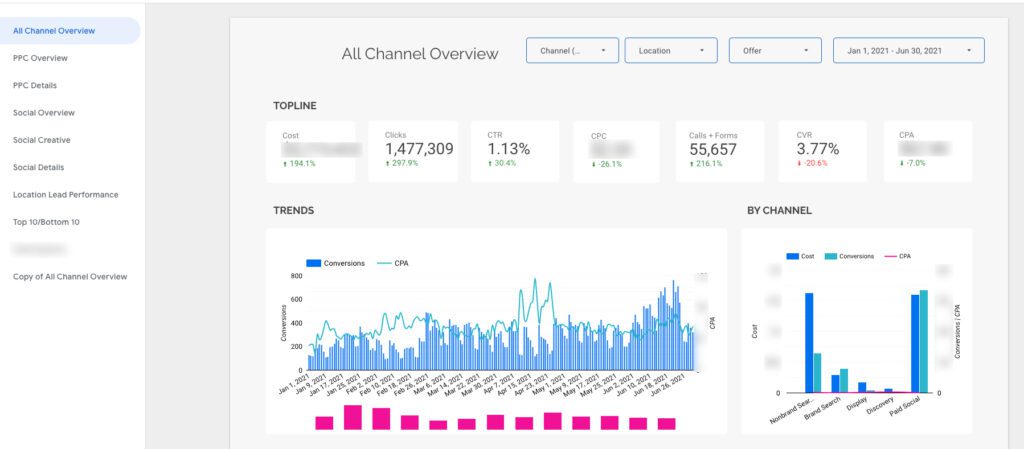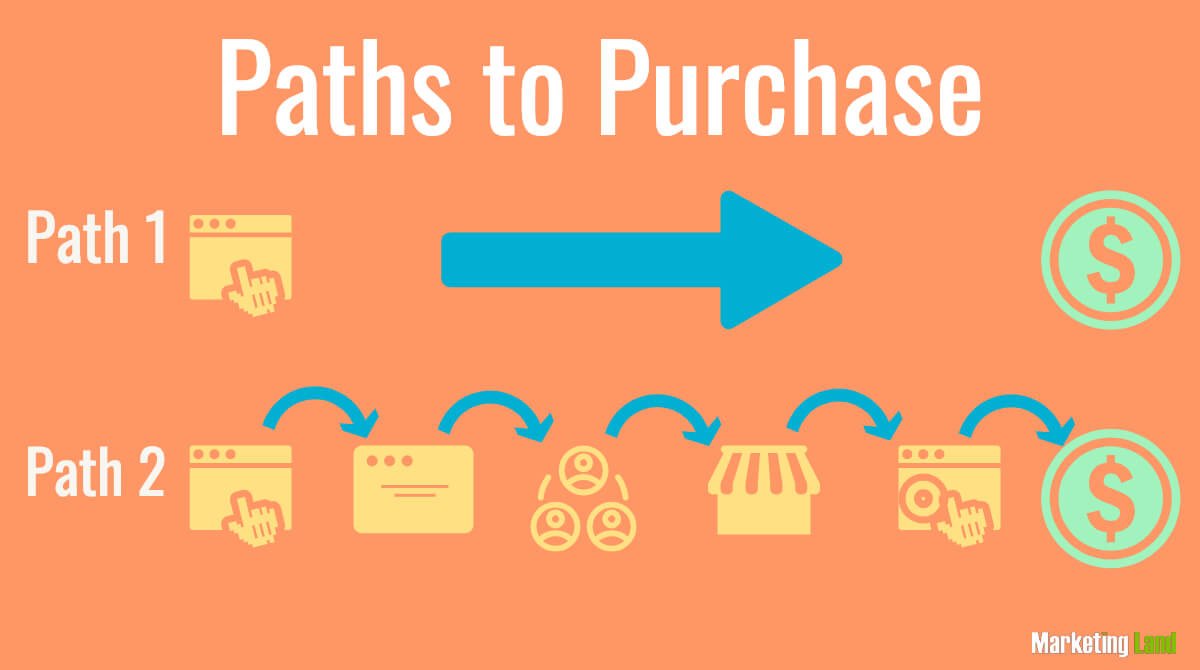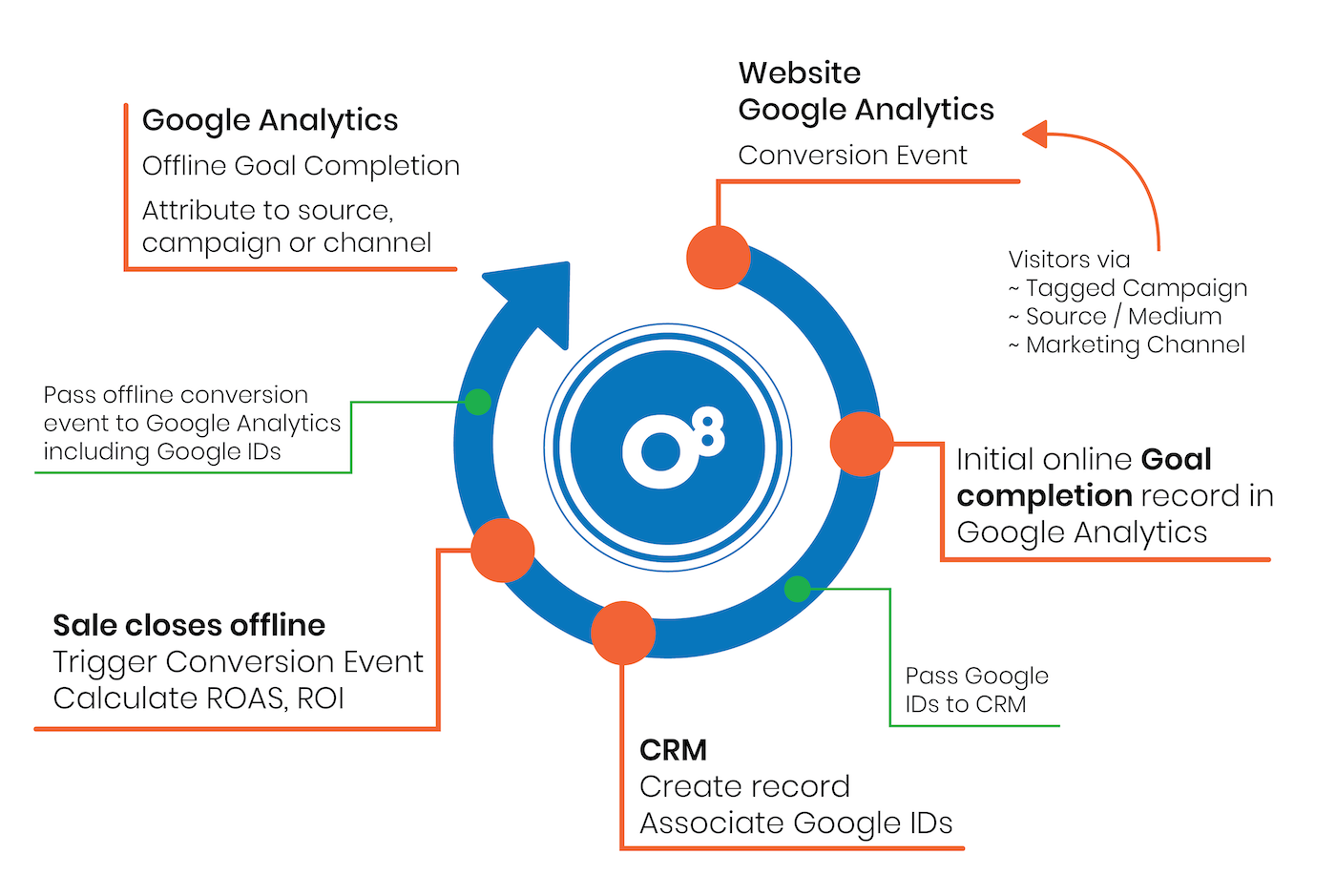Aside from the whole ten years in medical school thing, healthcare marketers and physicians aren’t entirely different. In medicine, practitioners use certain indicators to measure the success of a given treatment, medication, surgery, and so on. When treating high cholesterol, for example, a physician will likely run regular lipid panels to monitor any changes up or down.
While they’re not responsible for human lives, marketing professionals do need to evaluate the effectiveness of their strategies on patient outcomes. When evaluating new patient acquisition performance, for example, a marketer is going to check on changes in cost per acquisition. When people become patients, the marketer is going to look at the marketing channels that helped make it so and what the retention rate is.
This at its core is what marketing measurement is all about. And how healthcare marketers can use analytics to get more out of each dollar of spend is the focus of this blog post.
What Does Better Marketing Measurement Look Like?
Marketing measurement and analytics exist by the grace of creating data. Heaps of it. Thankfully, healthcare generates a lot of data, and if the growth of the healthcare analytics market is any indicator, there’s tremendous value in extracting insights from this data: by 2024, the market for healthcare analytics is predicted to eclipse 50.5 billion.
This means a lot of teams are looking to get more precise about measuring ROI. This is especially true with the influx of capital from private equity. Of course, every strategy for marketing measurement is going to look a little bit different. Generally speaking, there are a few fundamental parts that require your close attention:
- People: Prospective, new, existing, and former patients, first and foremost, though this might include partners and physicians, depending on the nature of the healthcare organization
- Activities: All of the channels, campaigns, tactics, strategies and so on that comprise your broader marketing strategy
- Data: The broad volume of data created across the organization, including its storage, structure, and use for extracting marketing performance and insights
- Metrics: Refers to the performance indicators for healthcare marketers to evaluate their effectiveness
- Technology: The myriad software platforms, systems, and tools (“MarTech” as it is commonly known) that support a healthcare marketing operation
Bringing these five broad aspects of marketing together is no small undertaking. Obviously, you need to account for a lot of moving parts. For marketers in particular, it helps to use a data > analytics > insights framework. That is, we as healthcare marketers use analytics to extract insights from our available data sources (patient data, marketing data, etc.).
Easier said than done. Historically, the organizations that do it best are the ones that effectively integrate patient and marketing data. A common example is the use of patient education to lower the cost of patient outcomes. Today, it’s possible to not only automate a patient education campaign, but to draw a line from things like inbound patient marketing or outbound patient education, to their impact on the cost of patient outcomes.
To build that kind of model for marketing measurement, healthcare marketing teams in particular need to step up their analytics game in four areas:
1. Integrate EHR, CRM, and Other Systems
You’re likely familiar with electronic health record (EHR) and electronic medical record (EMR) systems. More than likely, your organization already has one in place.
Denis Zhinko, writing for ScienceSoft, puts the necessity of this new “marriage” into context quite succinctly:
“Now that the industry agenda is all about value, a patient’s quality of life becomes central in this equation that makes caregivers’ revenues. The more informed and satisfied a patient is, the less chances there are for healthcare providers to face penalties that cut on their profits. This is where a properly tuned CRM system is a must, as it effectively fills the gaps that can severely affect treatment outcomes.”
That said, bringing together EHR/EMR systems, CRM, and marketing technologies without proper integration can create data silos, inefficiencies, and poor experiences that degrade marketing performance, instead of helping to measure and improve it. The successful integration of these technologies will require some or all of the following:
- Automated data transfers between CRM & Google Ads
- Google Ads custom conversion tracking
- Integrations with marketing automation technologies, analytics platforms, web services, etc.
- Google Analytics goals
- Data privacy and HIPAA compliance safeguards
An integrated model will make possible some of the marketing automations described by Factoreal: personalized outbound communications to patients or patient reminders for medical personnel. For healthcare marketers, this kind of integration makes it far easier to more accurately measure how marketing activities are affecting both the bottom line and better patient outcomes.
2. Build Accessible, Shareable, and Comprehensive Analytics Dashboards
A critical part of this more “integrative” approach to healthcare marketing will be the analytics piece. We’re guessing that your teams are using some kind of marketing report or dashboard. It could be something homegrown like an Excel file with charts or a dashboard built in an analytics tool such as Google Data Studio.
Your marketing dashboard visualizes real-time and reliable information about all of your marketing efforts. Ideally, a marketing dashboard provides high-level metrics for core marketing channels, such as SEO, paid advertising, social media, and so on, as well as the ability to drill down into specific areas. The most useful dashboards that we’ve come across are highly interactive, updated regularly (and automatically), and easy to share with various stakeholders across the organization. They make it easy to build and export reports, too.

What you’ll need to build a useful dashboard
- Access to clean and trustworthy data sources
- A good understanding of the must-have metrics and performance indicators your teams need to see
- A business intelligence and data analytics solution (see Looker for an example of healthcare analytics)
- Data science and IT professionals experienced in building reliable data pipelines
A healthcare marketing dashboard can provide very useful insights. For example, you might find that PPC lead acquisition is surging, but so is the associated cost per lead. Could you restructure campaigns to bring that cost per lead number down while maintaining volume? A robust marketing dashboard can help you pinpoint these kinds of actionable insights.
3. Nail Down Your Approach to Marketing Attribution
The debate around which attribution model to use rages on, mostly because, in the end, there is no one-size-fits-all answer. That said, figuring out which marketing activities contributed to the outcomes you care about (appointment bookings, revenue, etc.) is a critical part of healthcare marketing. Given the expanding universe of patient journeys, however, it can be difficult to select and implement a reliable attribution model.

At its core, marketing attribution is about answering a simple question: what marketing channel gets credit for a particular outcome? The answer to this question can be tricky to pin down. First and foremost, it can help inform how a healthcare organization allocates its budget.
We mentioned the importance of integrated marketing technologies and foundational data analytics, which you’ll need in place to enable good marketing attribution. That said, here are some of the more common approaches in use today:
- U-Shaped: A multi-touch attribution model that gives the most weight to the first and last marketing touchpoints, with the middle touches receiving less weight.
- W-Shaped: This model gives 30% credit to the first, middle, and last touchpoints, then 10% to the remaining touches in between.
- First Touch: In this model, you give 100% credit to the first action or click and none to the subsequent marketing touchpoints.
- Last Touch: Here, you give 100% credit to the last interaction before a conversion.
There are advantages and disadvantages to each attribution model. Likewise, some models will make more practical sense than others, depending on your particular goals and objectives. Fortunately, there are a plethora of new attribution tools, such as Ruler Analytics, Funnel, and Branch, that can track every channel that influenced a patient in their journey from awareness to consideration to action.
4. Make Closed-Loop Reporting the Gold Standard
What happens to the patient leads that marketing creates? Let’s say somebody performs a Google search for “local orthopedic foot surgeon,” clicks your ad and books an initial appointment. Wouldn’t you as a marketer like to know what becomes of leads that convert from that channel (PPC, in this example)?

Closed-loop reporting helps answer some of these questions. Essentially, closed-loop reporting provides data and insights across the entire patient journey, from first touch to the day they become an actual patient. From a marketing perspective, closing the loop means taking the revenue that results from a new patient and attributing it back to the channels, campaigns, and other marketing activities that influenced it along the way.
How Closed-Loop Reporting Helps Healthcare Marketers
A mature closed-loop reporting practice is going to tell you a lot about what is and isn’t working. You’ll know, for example, which marketing channels (SEO, PPC, etc.) are contributing to new patient revenue. You’ll have a good idea of which channels, despite your best efforts and investments, are failing to drive new leads. Finally, you’ll be able to draw lines between certain marketing channels and negative patient outcomes, such as churn, negative reviews, or no-shows.
Some Challenges to Extracting Healthcare Marketing Insights
We mentioned some of the struggles that healthcare organizations face when it comes to data. Bringing a lot of different unstructured data out of a lot of different silos, “cleaning” it, and then making it accessible across integrated systems, can be a huge undertaking.
That said, healthcare organizations also have compliance responsibilities with regard to personal health information. From email marketing to in-portal patient communications, HIPAA compliance must always be top of mind for healthcare marketers. Fortunately, many marketing automation, EHR/EMR, and CRM systems now come with HIPAA compliance built-in.
Finally, many healthcare marketing teams lack the in-house expertise to build a comprehensive data and analytics platform. Building an expert team capable of not only bringing the data together and presenting it but extracting the right insights to improve marketing strategy, can be difficult and costly. Many organizations find it difficult to find a reliable third party, too.
All of these obstacles can make it difficult to get the higher-level buy-in needed to invest in better marketing measurement. Without that buy-in, your insights into what’s working and what isn’t will be okay at best. This is why building a model that draws clear lines from marketing channels to the kind of ROI that the broader organizational stakeholders care about is so essential.
Above All, Do Right By Doing Right by Patients
In our quest for better marketing measurement, it’s quite easy to lose sight of what matters most: patients and patient outcomes. Yes, it’s important to successfully integrate your EHR/EMR, CRM, and other systems. Dashboards, attribution models, and closed-loop reporting are a must. Yet, all of it will fall short if we fail to put patients first in all that we do.
That’s why people are at the core of nearly all the benefits of digital marketing that we discuss with our own clients in healthcare. Because when you take care of your people, the marketing ROI you’re looking for is soon to follow.

